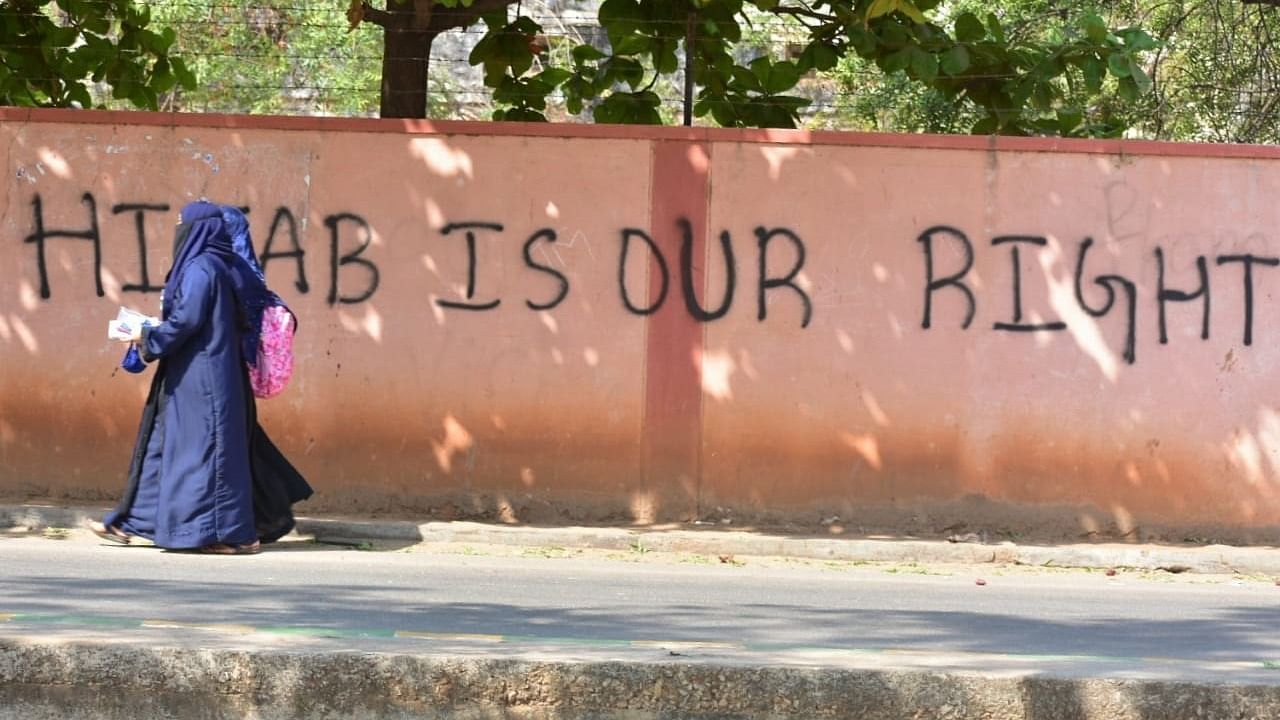
The High Court of Karnataka has upheld the ban on hijabs effected by the state government, reasoning that wearing of a hijab or headscarf is not a part of the "essential religious practice" in Islam, and the same was not protected under Article 25 of the Constitution.
However, experts have found fault with the judgment, saying that the court has been weighed down by the role of uniform, instead of seeing education as an end goal.
In his blog, noted advocate Gautam Bhatia, wrote, "There is, of course, a problem with the analysis in that it effectively denies to the Muslim women the ability to frame their argument as one of religious choice, and requires, instead, for them to argue in the language of religious compulsion."
Bhatia, in his post, summarises the different parts of the judgment after perusing the document. Bhatia is a scholar of constitutional law and an author of books, including The Transformative Constitution: A Radical Biography in Nine Acts.
Also Read — Karnataka HC's hijab verdict on 'blow' to right to education sans discrimination: CPI(M)
Bhatia said that the ban on hijab is reasonable when it is considered that the court reasons that dress is not at the core of free expression and privacy rights, but is a derivative right and therefore, weaker; that the classroom is a "quasi-public space" for weaker application of the rights.
"... the petitions we are treating do not involve the right to freedom of speech & expression or right to privacy, to such an extent as to warrant the employment of these tests for evaluation of argued restrictions, in the form of school dress code... Such ‘qualified spaces’ by their very nature repel the assertion of individual rights to the detriment of their general discipline & decorum," the judgment read.
However, Bhatia says that such an analysis is flawed. He said that be it speech or "visible manifestations of expression," the test for absolute protection remains the same in the Indian context. He cited the Naveen Jindal case, where the flying of the Indian flag was held to be protected under Article 19(1)(a) of the Constitution.
Further, Bhatia said that the concept of a "quasi-public space" was unclear in the judgment as the court failed to elaborate on the same, citing that the judgment lists schools, courts, war rooms and defence camps in one instance.
Bhatia said that the final part of the analysis is where the main error lies, wherein the court notes that the hijab cannot be accommodated because it would be contrary to the concept of a uniform.
"The object of prescribing uniform will be defeated if there is non-uniformity in the matter of uniforms," the judgment said.
Bhatia says that the court, by concentrating on a need for uniformity, has failed to analyse whether the lack of same, by allowing hijab, would undermine the purpose it serves —education.
He said that the court erred by sanctifying uniforms instead of education, and that uniform was looked upon as the end goal instead of making accommodations necessary to achieve "inclusive and egalitarian" right to education.
"Thus, by mixing up levels of analysis, the Court’s proportionality and reasonable accommodation analysis is constitutionally incorrect. And the root of this error – as I have pointed out above – is the Court’s assumption that education is uniform – that 'no reasonable mind can imagine a school without a uniform'," wrote Bhatia.